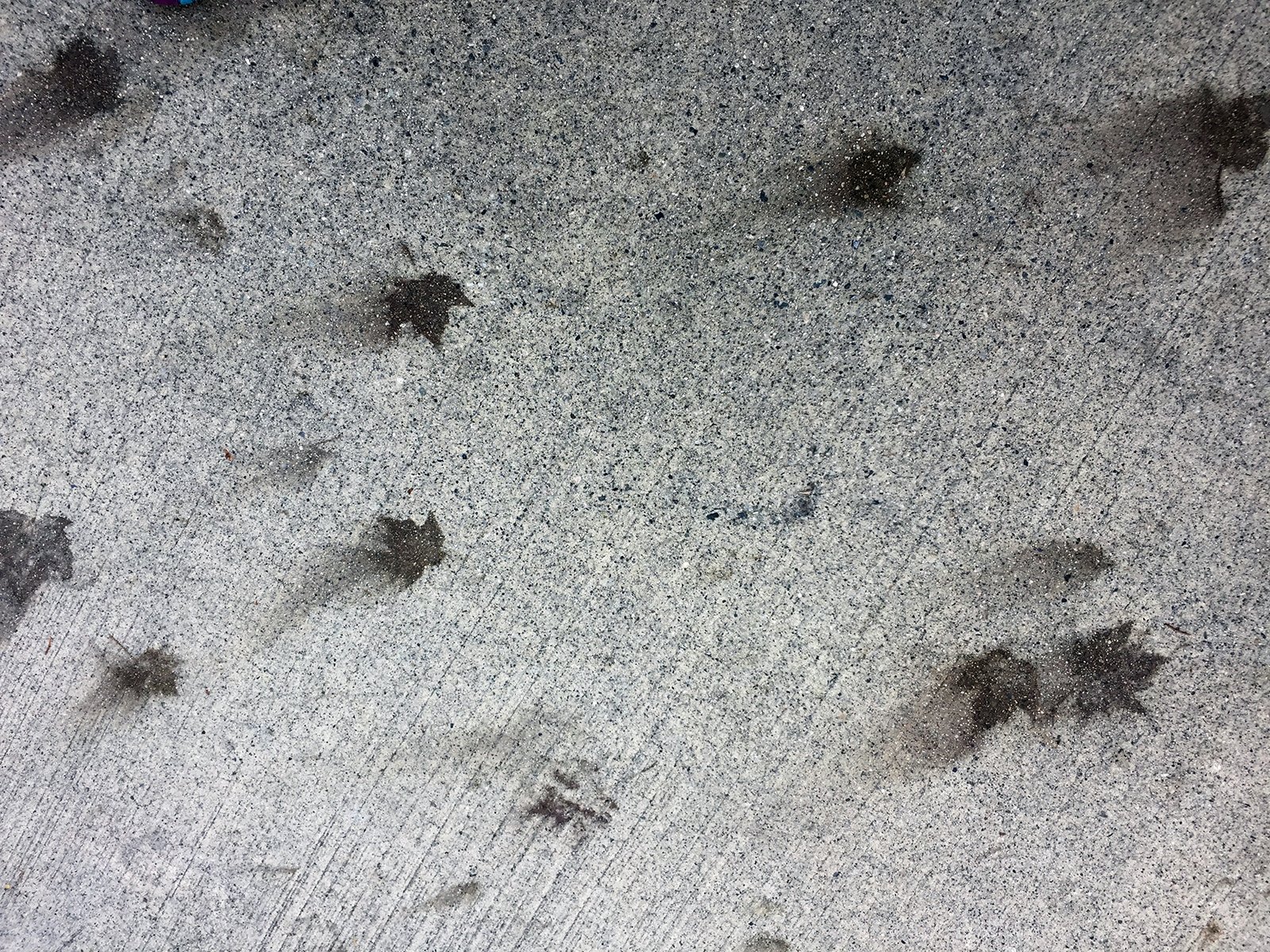Nature’s Ghosts and an Eclipse
During a partial solar eclipse. Photo: Tanya Clarke 2017
When I first started writing this a week ago, the rain was hammering down in vertical sheets filling the house with a dark and gloomy atmosphere.
Looking out of the window today the sun is bright, the sky blue and I can see the snow capping the mountains just beyond.
Tiny Crescents
In the Summer, not long after we moved here, we went on a short family holiday to Tofino on Vancouver Island. On the third day we got up a little earlier to get breakfast and wander down to the water's edge to experience the partial solar eclipse expected to occur that morning. 85% of the sun would be cast into shadow by the moon.
Being mindful not to look at the eclipse directly with our delicate naked eyeballs, we made a mini pinhole projector (see photo above) from two paper lids by creating a tiny hole in the middle of one with a sharp pencil and using the other as the focusing screen.
The change in light seemed imperceptible at first. A drop in temperature signified the beginning of the moon slowly eliminating the light and warmth of the sun. We zipped up our jackets and looked out across the sea towards the horizon. An eerie twilight settled over the water and everything around us. I noticed how the small amount of sunlight left, reflected through my eldest daughter's long blonde hair. Beyond her a long line of people in deckchairs sat back, eyes covered with special protective glasses, watching the sun disappear.
With our backs turned against the sun, we focused a tiny crescent light through our DIY pinhole projector as the world went quiet and everything that might have moved stopped. Even the water was silent, the tide out, a few small waves lifting and falling beyond the shore.
Tiny Apertures
As we walked back to the hotel, our daughters suddenly gasped in delight. Looking down we saw a scattering of crescent-shaped reflections all across the path wherever the shade of the trees covered. We marvelled at them while gathering the shapes in our hands, letting them go to watch them spill out across our feet.
Scrolling through Instagram that evening, I came across a post from the photographer, William Morkrynski, who explains how these tiny crescent-shaped reflections are formed.
“One of the most interesting phenomena of a solar eclipse, which I’ve never experienced in person before...is how every tiny aperture in nature facing upwards is a lens. Each crossing of leaves or tiny hole projects a circular image of the sun onto the ground. During an eclipse, the familiar dabs of light scattered under trees change from circles to crescents, projecting the transit of the moon. Our daytime world is a giant camera, constantly projecting images of the brightest object in the sky before us.”
Nature’s Ghosts
A few weeks later, into early Autumn, I started seeing dark softly-defined leaf shapes appearing on the ground. They seemed to shimmer above the concrete like strange ghostly silhouettes. Being Canada, many of the leaf shapes were maple, made from the trees lining the streets in the village and along the residential roads. I thought they beautiful, a timely reminder of the changing seasons.
My google search of ‘how does this happen’ resulted in pages and pages of different ways to remove the dark 'stains' from suburban concrete driveways and paths. What I saw as fascinating and beautiful, for others were undesirable blemishes to be removed quickly.
But still, the question, how are they formed?
It's Autumn and the leaves from all the deciduous trees begin to fall. The weather shifts from sunny days to cooler, wetter weather. Heavy rain works its way into the leaf cells as they lie on the ground. The tannins in the fallen leaves are released by the rain, in the same way that hot water releases the tannins in tea leaves when you make yourself a cup of tea.
Then along comes a spell of dry weather and the leaves relinquish their moisture to the air. Now crisp and dessicated, the leaves are blown away on a breeze. What's left behind are their dark shadows on the ground - nature’s photograms.
Photo: Tanya Clarke 2017



